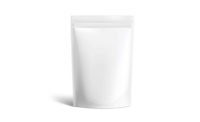More than ever, there is a pressing need in the retail meat case for product differentiation. Store brands are gaining importance and status, so stores must explore every means within reason to set themselves apart from the national brands. For store brands, form-fill-seal packaging provides, as one industry executive puts it, “… the visual flexibility as a platform to optimize the case space they occupy and compete for shoppers’ attentions.” Packaging options within form-fill-seal abound. Processors can offer up thin gauge or heavier for semi-rigid modified-atmosphere or vacuum-skin packaging, to name just a few. There’s just a larger array of formats than for bags.
One form-fill-seal format that is seeing growth is high barrier flex/flex, in which there are flexible bottom and top webs. With ground beef, this vacuum package has shown it can deliver 28 to 32 days of retail shelf life, according to a source familiar with the application. He points out that even greater freshness life is doable, but anything beyond about 28 days passes a point of diminished return for customers who are likely to ask what’s being added to meat to get this kind of duration.
In the U.S., some think that with fresh meat applications form-fill-seal, as a flex/flex format, continues making inroads into the rigid modified-atmosphere business, whereas, in other parts of the world fresh meat has for some time been packaged in form-fill-seal rather than pre-made trays. As new production capacity is added here at home, more and more of it is going to form-fill-seal systems rather than to tray-sealers.
Of course the adoption of any packaging format comes with challenges. Apart from the fundamentals of mating top and bottom webs for secure seal integrity, material selection is critically dependent on the draw depth needed for the application. The geometry everyone took in high school and thought we would never use comes starkly into play here. Form-fill-seal systems also represent sophisticated engineering and are not inexpensive, although they are proven to deliver value.
Form-fill-seal also is clearly showing its viability as a format ideally suited for barrier packaging materials with sustainable options. The processing industry is performance-driven, so if high-barrier materials that are also sustainable and priced competitively can come along for the ride, it’s a nice win-win for everyone.
So has the industry reached some sort of tipping point with form-fill-seal? Is it poised for dominance? With fresh meat, not yet. Bags and trays are still essential. But form-fill-seal is no longer limited mostly to smoked and processed meats. Its versatility and cost effectiveness make it attractive for applications in which portion size, eye appeal, brilliant graphics, messaging and product information swirl together to create the kind of visual magic that stops shoppers and persuades them to check out one product instead of a competitor’s offer. NP







